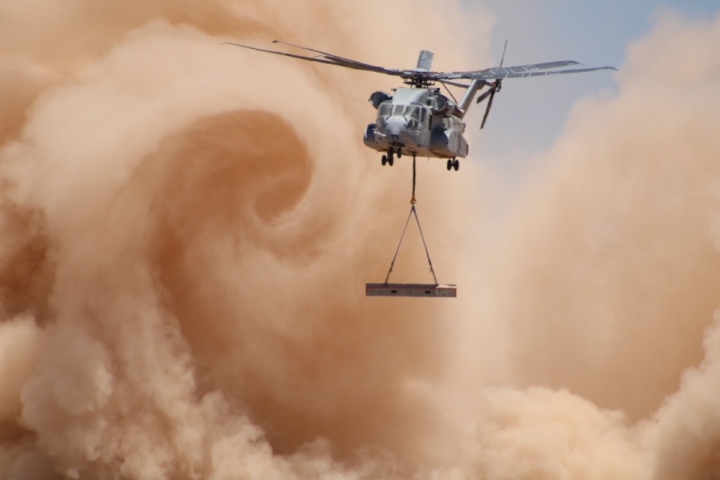King news
The US Marine Corps is conducting operational fleet flight tests with the brand-new CH-53K King Stallion ahead of its Initial Operational Test and Evaluation (IOT&E) this summer as the US Navy revealed.
USNI reports that the heavy lift helicopter programme manager at Naval Air Systems Command (NASC), USMC Colonel Jack Perrin, said that Marines from Marine Operational Test and Evaluation Squadron (VMX) 1 at MCAS New River (NC) began flying the CH-53K in January 2021 (see also Scramble News 5 October 2020). Until that time, only pilots in the test team – professional test pilots hired by the USMC and contractor Sikorsky, as well as those in Air Test and Evaluation Squadron (HX) 21 – had flown the King Stallion.
By mid-2021, VMX-1 will have trained enough pilots and maintainers to take a four-helicopter detachment out for the IOT&E. The evaluation will lead to Initial Operation Capability (IOC) of the type and subsequently to the first deployment of the modern fly-by-wire helicopter in 2023 or 2024.
In spring 2020, the King Stallion was tested in day and night aerial refueling tests (including refueling with external loads), that period was followed in June 2020 by a seven-days shipboard compatibility test. During that week, 350 starts and landings were excuted on every available spot of a ship. The deck handling of the massive helicopter was also tested (taxying, towing, elevators, hangar deck, foot print, maintenance, validation of the blade fold system at sea and so on). In July, the test team moved to MCAS Yuma (AZ) for degraded visibility testing. During those tests, the USMC created brown-out and other conditions with certain types of dirt that would create the toughest flying and hovering conditions for the pilots.
USNI reports that the USMC now owns four CH-53Ks for flight tests, which are slowly rolling out to VMX-1. The service has 24 K's on contract and is planning an order for another eighteen in production line Lots 5 and 6.
The full-rate production is expected from late 2021 and eventually, the King must reach full operational capability and full fielding by 2030.


